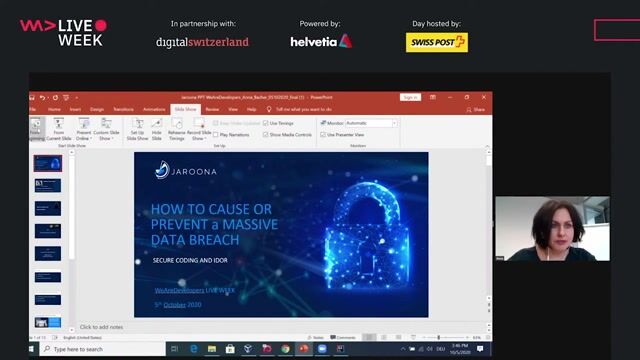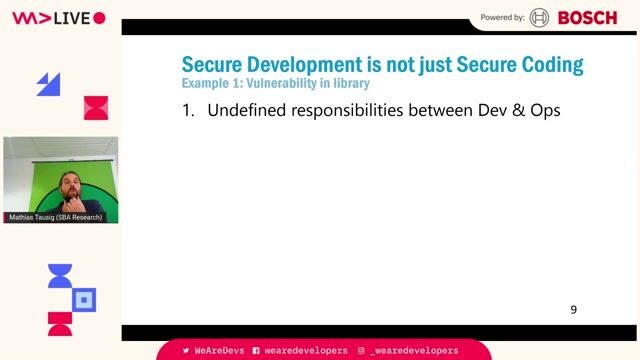Antonio de Mello & Amine Abed
The attacker's footprint
#1about 10 minutes
Defining key cybersecurity tools and terminology
An overview of essential information security concepts and tools is provided, including nmap, Burp Suite, IDOR, LFI, and SIEM platforms.
#2about 16 minutes
Performing reconnaissance with an nmap port scan
The initial attack phase begins with an nmap scan to discover open ports and services, identifying potential web applications and an Apache server.
#3about 11 minutes
Gaining initial access with default credentials
After failed SQL injection attempts, access is gained by logging in with common default credentials and a path disclosure vulnerability is found via a malformed JSON.
#4about 13 minutes
Exploiting broken access control with cookie tampering
A base64-encoded cookie is manipulated to access another organization's data, and fuzzing reveals a hidden admin parameter to view sensitive information.
#5about 10 minutes
Reading sensitive files with a path traversal exploit
A known path traversal vulnerability in the Apache server is exploited to read the `/etc/passwd` file and a sensitive configuration file containing credentials.
#6about 1 minute
Achieving remote access via SSH with guessed credentials
Using the leaked username, the password from the configuration file is modified by incrementing the year to successfully log into the server via SSH.
#7about 21 minutes
Analyzing API logs to trace the attacker's steps
The defender analyzes API logs to identify failed SQL injection attempts, a successful login, parameter fuzzing, and cookie manipulation by observing response codes and body sizes.
#8about 15 minutes
Correlating web server and authentication logs
Apache and authentication logs are examined to find evidence of the nmap scan, the path traversal exploit, and the final successful SSH login after several failed attempts.
#9about 13 minutes
Demonstrating a SIEM for automated threat detection
A Security Information and Event Management (SIEM) tool is shown to automatically detect and flag suspicious activity, such as the nmap user agent, in real-time.
#10about 18 minutes
Summarizing vulnerabilities and key security recommendations
The workshop concludes with a summary of the attack chain and provides key recommendations for developers and defenders, such as patch management and maintaining high-quality logs.
Related jobs
Jobs that call for the skills explored in this talk.
Featured Partners
Related Videos
 43:56
43:56Getting under the skin: The Social Engineering techniques
Mauro Verderosa
 40:38
40:38How to Cause (or Prevent) a Massive Data Breach- Secure Coding and IDOR
Anna Bacher
 29:34
29:34You can’t hack what you can’t see
Reto Kaeser
 44:30
44:30Securing Your Web Application Pipeline From Intruders
Milecia McGregor
 37:32
37:32Cyber Security: Small, and Large!
Martin Schmiedecker
 44:40
44:40Enabling automated 1-click customer deployments with built-in quality and security
Christoph Ruggenthaler
 1:41:05
1:41:05Maturity assessment for technicians or how I learned to love OWASP SAMM
Mathias Tausig
 57:47
57:47Cracking the Code: Decoding Anti-Bot Systems!
Fabien Vauchelles
From learning to earning
Jobs that call for the skills explored in this talk.
Attack Simulation / Penetration Testing
Instaffo GmbH
Obergünzburg, Germany
Azure
Burp Suite
Network Security
Microsoft Active Directory
Introductory Cyber Protection Bootcamp (Waltham Forest)
ITonlinelearning
London, United Kingdom
€58K
Network Security
Cyber Security Pathway for Beginners (Southampton)
ITonlinelearning
Southampton, United Kingdom
€38K
Network Security
Security Engineer (Full remote) Who You Are D'autres offres vous correspondent ! Application Security Engineer | TheFork
Papernest
Barcelona, Spain
Remote
Bash
Nginx
Redis
DevOps
+12
Cybersecurity Beginners Bootcamp (Blackburn)
ITonlinelearning
Blackburn, United Kingdom
€47K
Network Security
Hands-On Cyber Security Training Programme (Redbridge)
ITonlinelearning
Ilford, United Kingdom
€46K
Network Security
Cyber Security Starter Course (Brighton)
ITonlinelearning
Brighton and Hove, United Kingdom
€35K
Network Security


